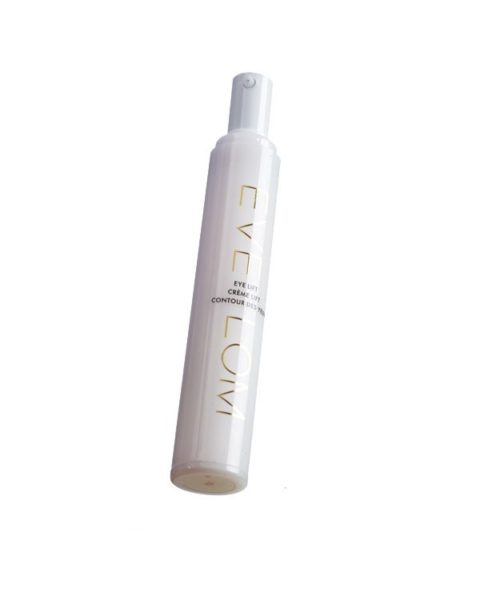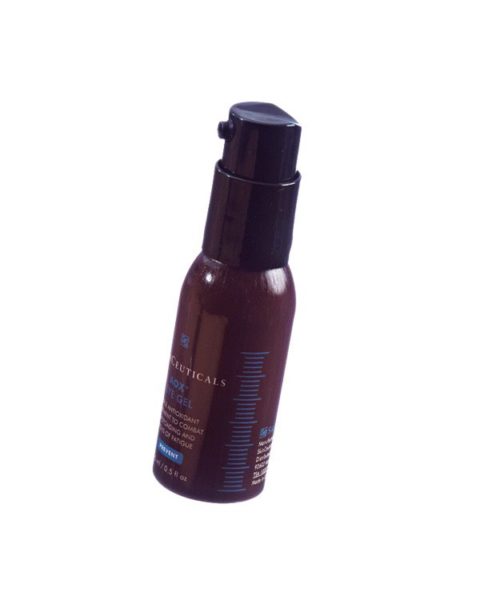Tired of being told you look tired? From serums to surgeries, we test-drive the top anti-aging eye treatments

See our top anti-aging eye products »
“Don’t you think she looks tired?” These six words, murmured by a male adversary, take down an entire government. Doctor Who’s Tenth Doctor is speaking about Harriet Jones, the 50-something prime minister of Britain. As his words spread doubt about her capabilities, Jones begins to panic and worry—appearing tired as a result. The time-travelling Doctor himself may be incredulous at how little has changed with regard to the link between professional women’s work and their appearance-—the appearance of fatigue, particularly.
So age discrimination persists against women? There are “all kinds of it,” says Spring Tompkins, a professor of human resources at St. Lawrence College. One acquaintance, a finance executive in her 60s, has been bombarded throughout her career with faux sympathy for her so-very-tiredness. “I know they’re trying to undermine me,” she says. “I just smile.” Such digs are a way of nipping at one’s confidence and sense of security in the many industries that value youth over experience. It’s a global issue: The Daily Beast reports that in China, professional women nearing their 30s are increasingly resorting to plastic surgery—many job postings are open only to women under 30, and unmarried females in their late 20s are commonly referred to as “leftover women.”
In my late 40s, and newly captivated by my own tired-looking eyes—perhaps it was the acidulously sweet remark, “You look like you haven’t slept in weeks, are you OK?”—I have decided to face this dilemma head-on. For the past six weeks, I have paid so much attention to the area under my eyes that I suspect it is actively seeking a restraining order. I am considering all my peri-orbital choices, from a quick cosmetic fix to that more costly, grave region where a man in a white jacket says things like, “Optimally, you don’t want to get hair in the wound.”
I start by talking to makeup artist Matthew Coccia, who cautions against using heavy pancake. For puffiness or bags, he uses Nanoblur, a balm that “tricks the light into shining off your face differently.” The tip I like most is sculptural: Don’t colour over your eye-bags with the wrong shade; blend concealer into the circles and build up the area below the puffiness, a “hill and valley” theory.
After concealing my flaws, I move on to repairing them. I throw away my salt-lick and tequila, stock up on barrels of water (“Hydrate! Hydrate!” is the battle cry of skin-preservers) and try Preparation H, a hemorrhoid product long whispered about as a secret Hollywood de-puffing weapon. It contains an anti-inflammatory and shark liver oil; as such, you get to feel like an ass-face while reeking of dead fish. Don’t believe the hype.
It is not a bad idea to try the old classics: cold spoons, damp teabags or cucumber slices. If you can lie still for 15 minutes, the difference is noticeable. Perfect for those mornings when your eyes seem to have developed coffee rings or kangaroo pouches.
Envisage is a wishbone-shaped vibrating device deve-loped by Toronto physiotherapist Anita Lorelli, drawing on her knowledge of facial exercises that she believes stimulate the lazy collagen beneath our skin. I use it for a month, whipping it out during movies. I swear I see a difference in my appearance, and so does the perverted cab driver who keeps asking me to marry him.
“Whatever makes you feel better,” says Toronto cosmetic dermatologist Dr. Nowell Solish about my experiments, in the weary tone of a mechanic I have told that I am fixing my camshaft with a rubber band and Elmer’s Glue. Heretically, he debunks my prized expensive creams as “smoke and mirrors.”
Cosmetic surgeon Dr. Cory Torgerson is more bemused than anything and I soon understand why: When he explains the complex physiognomy of an aging face, I am daunted by terms like “atrophy,” “pseudo herniation” and “orbital septum,” and wonder how anything but surgery will help. Yet he is open-minded about the potential of dietary changes and skin-tightening products.
It’s time to start creaming my face like a cake pan. I test-drive an array of roll-on brighteners, cooling gels and “correcting” lotions. The Dr. Oz-approved Elite Serum I find online comes in a faux syringe loaded with peptides, the last word (after retinol) in eye management. Its effects and texture are pleasing, as are the products I assumed would be weapons grade because I procured them from medical sources: Alyria Firming Eye Cream, Indeed Labs Eysilix Instant Eye Rescue and Hollywood Eye Magic, which comes with a pamphlet that asks, dead-on, “Tired of Looking Tired?” It has that “wow factor,” Puregress Med-Spa owner and filler injector Tracy Sekulovski informs me, accurately, about its instant effects.
Still, I long for more dramatic results. Toronto ophthalmic plastic surgeon Dr. James Oestreicher, who lives and breathes eyelids, describes what blepharoplasty—surgical modification of the eyelids and region—entails: the laser cutting; the metal corneal caps; three days of ice-water application; a week of vision blurred by ointments; no bending over; and get your hairy pets away from you! I am too queasy to go through with it. One of his patients concurs that she had been frightened but was thrilled by the results, unfazed by the recovery process and in fact let her dog sleep on her bed. She speaks reverently of the “Dr. O” look: “He makes this one final stitch at the end and it just pulls everything together—gorgeous.”
A few weeks into my home regimen, my eyes already look better. When I meet to discuss fillers with Solish, who has only seen a photograph that I called “The World’s Ugliest Selfie,” he ups his promised 50 per cent improvement to 80 or 90 per cent. He and I also talk about the work force. Like Torgerson and Oestreicher, Solish sees a large number of women (and men) who “want to stay competitive.”
He faces my questions about the injection process (which “may cause blindness”) squarely, consoling me with descriptions of squalid doctors ineptly using jumbo needles and black-market product. Before I know it, he has jabbed a few tiny needles below my eyes, stopped, squinted and added finishing touches, using the new filler Volbella.
The difference is noticeable immediately. It’s compliment-city and people have no idea what has changed. They do know that I look wide awake, which of course makes me feel alert and competitive and voila! The happy circle starts to roll. Of course, that circle can be kicked into motion just by remembering who you are. As the Gallic author of French Women Don’t Get Facelifts writes, “Being grown up means losing some of life’s insecurities, like worrying too much about gravity. There is much living in the moment for French women of a certain age, defiantly so.” Tompkins recommends shoring up one’s experience and authority and remembering that such things make us “unquestionably” powerful. I picture Joan Crawford in Mommie Dearest, mature and magnificent, bellowing at a cowed boardroom full of men who have tried to remove her from the business. She attacks her skin with hard brushes, boiling water and ice each morning.
If we look a little tired, I say, summoning the great lady of discipline and strength, we’ll work on that if you’ll stop tiring us with brinkmanship, cattiness and attempts to equate our sleepy eyes with incompetence. I am thrilled with my new-ish eyes. I want to use them to see a new world.
The post Tired of being told you look tired? From serums to surgeries, we test-drive the top anti-aging eye treatments appeared first on FASHION Magazine.





